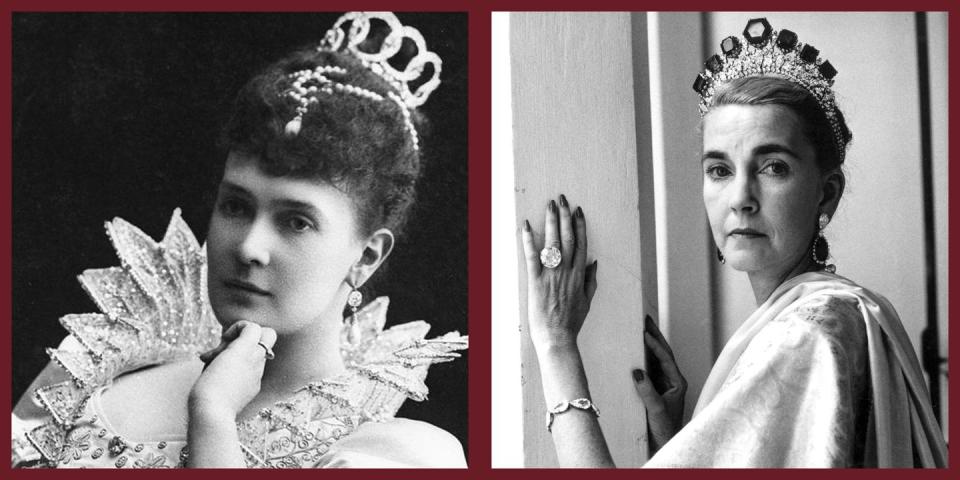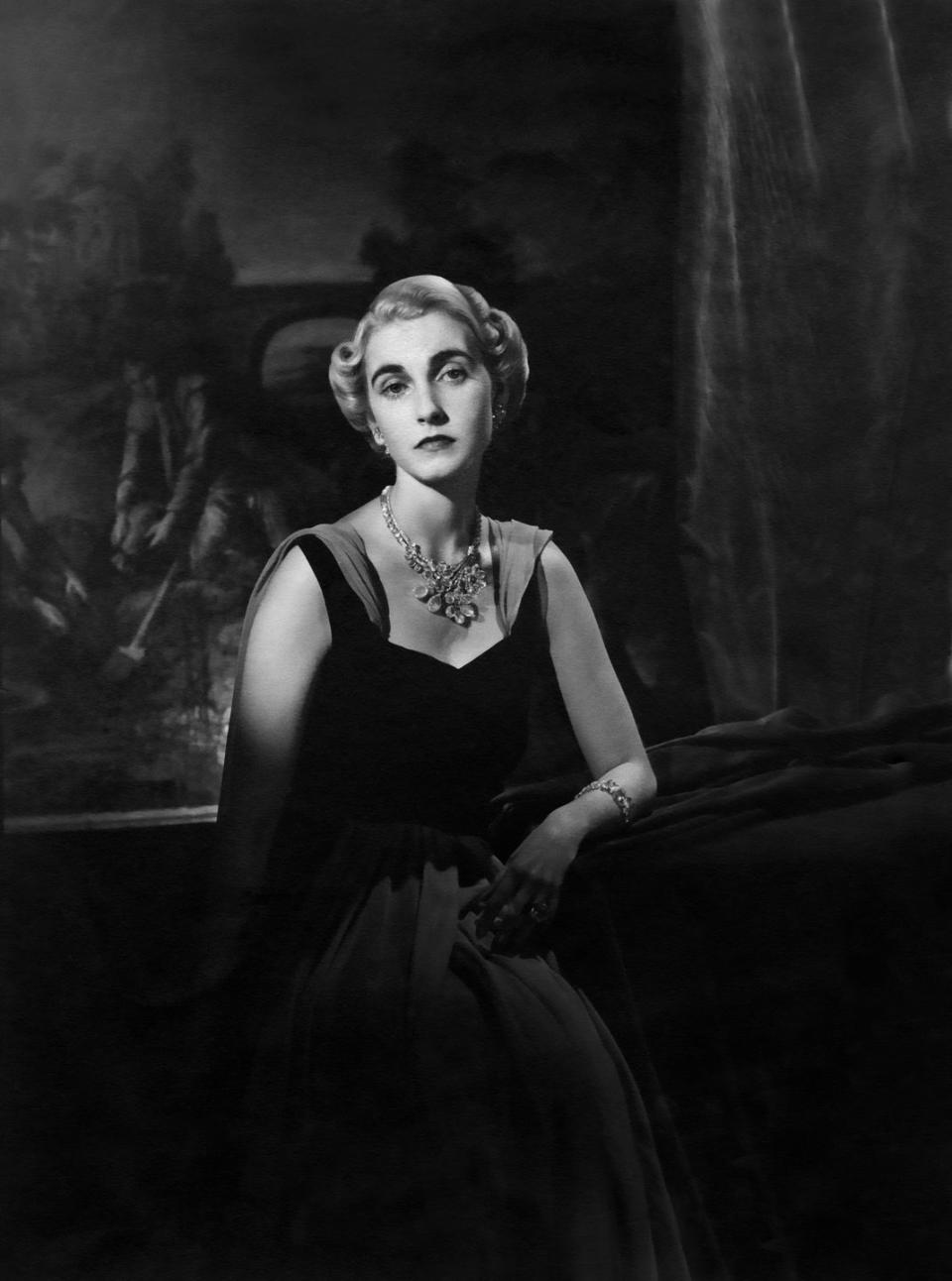How Romanov Emeralds Ended Up With an American Princess

One of my favorite jewelry images: Barbara Woolworth Hutton photographed by Cecil Beaton in her Vladimir emerald tiara and the Pasha diamond that belonged to King Farouk. There is also the bracelet, a straight line of Golconda diamonds. But the tiara. Vladimir like the tiara of T&C March Madness fame? Yes, from the same legendary jewelry collector, the Duchess Vladimir of Russia.
The Duchess, born Marie of Mecklenburg-Schwerin, joined the Romanov dynasty in 1874 when she married Grand Duke Vladimir Alexandrovich of Russia, uncle to the doomed last Romanov Emperor, Nicholas II. She established a grand court at St. Petersburg’s Vladimir Palace, with a jewelry collection to match.

Upon receiving news of the revolution, she left St. Petersburg with only a few "daytime jewels and strings of pearls" and hid the real treasures in a secret compartment in the Vladimir Palace. She remained in the countryside until February 1920, when she fled to Venice, becoming the last Romanov to leave Russian soil.
Her jewels, however, had gotten out even before she did. In an operation worthy of a thriller, a British officer snuck into the Vladimir Palace dressed as a worker (though one version states it was as an old woman) and stashed all the hidden jewels in his bags (in the old-woman version, some were sewn into a bonnet).
The jewels made it safely out of Russia and into London where her son Grand Duke Boris was living in exile.
After Duchess Vladimir’s death, her family began to auction her jewels to support themselves. The Vladimir tiara (with its original natural pearls) was sold to Queen Mary (who created the option to swap the pearls with the Cambridge emeralds) and a stash of rare emeralds, given to the Duchess as a wedding gift by her father in law Tsar Alexander II and worn in all their glory by her at the famous costume ball of 1903, was sold to Cartier.
The prized Vladimir emeralds would go back and forth between the French house and provenance-hungry American heiresses for at least another decade. Soon after the Vladimir emeralds were acquired by Cartier from the Duchess’s family, they were sold to Esther Rockefeller McCormick who believed she had, in another life, been the wife of King Tut.
Upon her death in 1930, the emeralds go back to Cartier and in 1935 they are sold to Barbara Woolworth Hutton, then on the second of seven marriages.

It is said she spent a million on the Romanov treasures and, after some debate about how to set them, she decided in 1947 on an Indian style tiara in yellow gold. The choice of yellow gold was a departure from the platinum settings that defined jewelry of this level before the war. Yellow gold had during the war, and after, became more popular as platinum was labeled a strategic metal and any non-military use of it was banned.
Hutton’s Vladimir emerald tiara could also be worn as a necklace. She loved to wear her Vladimir emeralds while wearing a sari entertaining guests in Tangier. In 1965, in an effort to fund one of her divorces, Hutton sold the emeralds to Van Cleef & Arpels. As was the custom at the time—and because of the incredible value of the emeralds themselves as well as the challenges of wearing an Indian-style tiara—the house sold the emeralds separately.
Another where are they now—perhaps on your finger, or around the neck of someone you know? A jewelry mystery.
You Might Also Like

